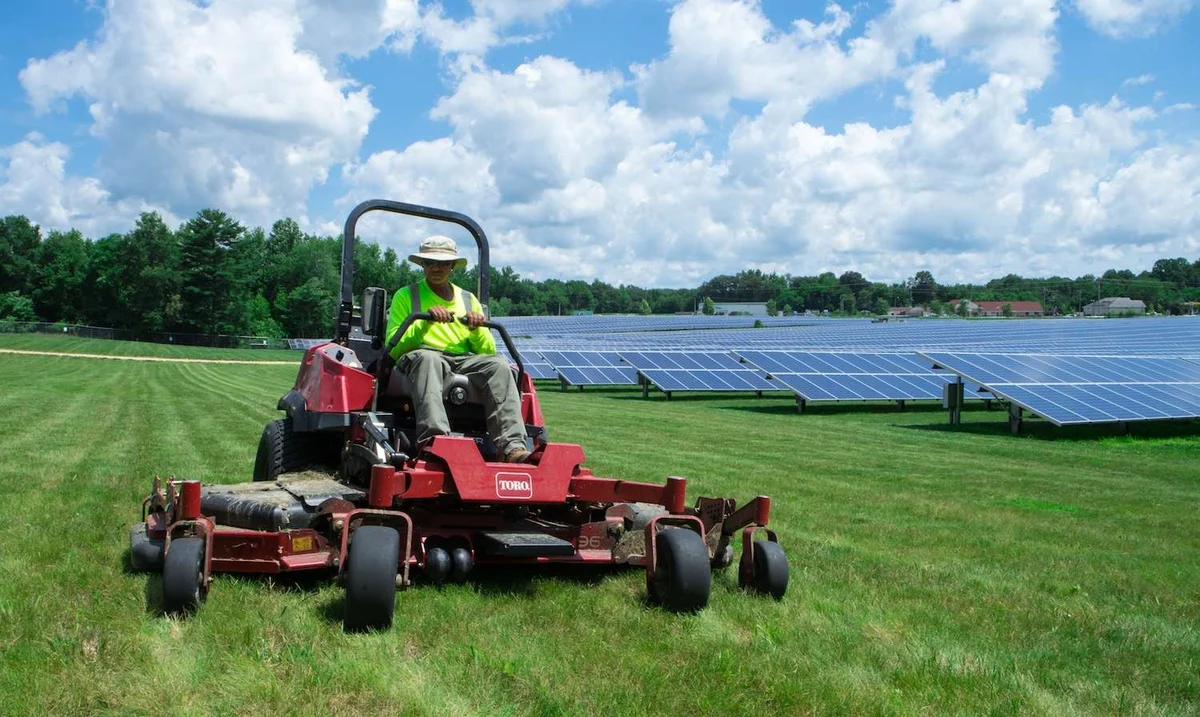You’re enjoying your morning coffee when you notice an official-looking notice taped to your front door. Your heart sinks as you read about a lawn violation and potential fines. This scenario plays out more often than you’d think across Maryland neighborhoods, leaving homeowners scrambling to understand what they did wrong and how to fix it.
Whether you’re new to the area around Greencastle or you’ve been here for years, the rules can be confusing and they’re definitely not the same everywhere. Maryland’s lawn laws exist for good reasons – they help maintain property values, protect our local environment, and keep neighborhoods looking their best. But these laws can vary significantly from county to county, and even from one municipality to another.
In this guide, we’ll break down everything you need to know about lawn law in Maryland. We’ll cover the statewide requirements, dive into local regulations, and help you understand how to stay compliant. By the time you’re done reading, you’ll know exactly what’s expected of your lawn and how to maintain it properly.
Understanding Maryland’s Statewide Lawn Regulations
Maryland doesn’t have one single “lawn law” that applies everywhere, but there are some statewide rules that every property owner needs to follow. These laws focus on environmental protection and preventing invasive species from spreading throughout the state.
Key Statewide Requirements:
- Noxious weed control – Property owners must remove specific invasive weeds like Canada thistle, Johnson grass, and multiflora rose.
- Fertilizer restrictions – Limited phosphorus use and timing restrictions near waterways and the Chesapeake Bay.
- Pesticide application rules – Certain treatments require licensed applicators, especially near water sources.
- Environmental buffer zones – Maintain chemical-free areas near streams, ponds, and other water features.
- Invasive species prevention – Responsibility to prevent spread of harmful plants to neighboring properties.

Grass Height Requirements Across Maryland Counties
Most Maryland counties set grass height limits between 6 and 12 inches, but the exact number depends on where you live. In some areas around Greencastle, you might get a warning first, while other municipalities jump straight to citations. The enforcement usually happens after someone complains or during routine inspections.
Here’s something that catches people off guard: these height requirements often apply to your entire property, not just your front yard. That means the grass behind your house and along your property lines needs to stay within limits too.
Maryland’s Noxious Weed Laws
Maryland law specifically targets certain weeds that spread aggressively and damage other plants. If these show up on your property, you’re legally required to remove them – and if you don’t, your local government can do it for you and send you the bill.
The tricky part is that many homeowners don’t recognize these weeds until they’ve already established themselves. Once they’re there, getting rid of them usually requires professional-grade treatments that aren’t available at your local garden center.
Local Municipal Lawn Laws in the Greencastle Area
While Greencastle sits right on the Pennsylvania border, many residents live in Maryland counties that have their own specific lawn requirements. Franklin County and Washington County both have ordinances that can be stricter than state law, and they’re actively enforced during the growing season.
Most local ordinances in our area focus on grass height (typically 8-10 inches maximum), weed control, and general property maintenance. Washington County has been particularly active with enforcement in recent years, especially in neighborhoods where property values are rising.
Common Municipal Requirements
The most common violations we see around Greencastle involve grass that’s grown too tall or properties where weeds have taken over large sections of the lawn. Local code enforcement typically operates on a complaint basis, meaning someone has to report the issue before they’ll investigate. However, some municipalities do drive-through inspections in spring and summer.

HOA and Neighborhood Lawn Requirements
If you live in a community with a homeowners association, you’re dealing with an extra layer of lawn requirements on top of government regulations. HOA rules are usually stricter than municipal laws and can cover everything from grass type to maintenance schedules.
Common HOA Lawn Standards:
- Grass height limits – Often stricter than municipal requirements, sometimes as low as 4 inches.
- Grass type restrictions – May require specific varieties or prohibit certain types of turf.
- Weed tolerance levels – Zero tolerance policies for dandelions, clover, and other common weeds.
- Maintenance schedules – Required mowing frequency and seasonal care timelines.
- Aesthetic standards – Brown patch limits, edge trimming requirements, and overall appearance guidelines.
- Landscaping approval – Pre-approval needed for changes to lawn areas or garden beds.
- Irrigation requirements – Mandatory sprinkler systems or watering schedules during dry periods.
Maryland Lawn Care Product Regulations
Maryland has some of the strictest fertilizer and pesticide laws in the country. The state’s focus on protecting the Chesapeake Bay means there are specific rules about what you can apply to your lawn, when you can apply it, and how close you can get to water sources.
The timing restrictions are particularly important around here because we’re so close to waterways that eventually drain into the Bay. You can’t apply most fertilizers during winter months, and there are buffer zones around streams where chemical applications are heavily restricted.
The Maryland Fertilizer Law
Maryland’s fertilizer law prohibits phosphorus in most lawn fertilizers unless you’re establishing new grass or a soil test shows you actually need it. You also can’t apply fertilizer before March 1st or after November 15th in most areas. The law requires a 15-foot buffer zone around waterways where you can’t use any fertilizer at all, and if you’re caught violating these rules, the fines start at $125 for first-time offenders.
What Happens When You Violate Lawn Laws?
Getting cited for a lawn violation isn’t just embarrassing – it can be expensive and time-consuming to resolve. Most violations start with a complaint from a neighbor or a routine inspection by code enforcement. The good news is that most jurisdictions give you a chance to fix the problem before hitting you with serious penalties.
Typical Violation Process:
- Initial notice – Written warning specifying the violation and deadline for correction (usually 7-14 days).
- Inspection period – Code enforcement returns to verify compliance after the deadline
- Citation issuance – Formal tickets with fines if the problem isn’t fixed
- Fine escalation – Daily penalties that increase the longer violations continue
- Government intervention – Municipality can hire contractors to fix the problem and bill the property owner
- Lien placement – Unpaid fines can result in liens against your property
- Court proceedings – Serious or repeated violations may require court appearances
How to Avoid Violations
The best way to avoid lawn law violations is staying proactive about maintenance and understanding what’s required in your specific area. Regular mowing during the growing season, prompt weed control, and following fertilizer application guidelines will keep you out of trouble most of the time.
Documentation is also important if you’re dealing with a violation dispute. Taking photos of your property maintenance, keeping receipts for lawn care services, and maintaining records of any treatments applied can help if you need to prove compliance.
Professional Lawn Care and Legal Compliance
One of the biggest advantages of working with a professional lawn care service is that they handle all the compliance issues for you. Licensed companies stay up-to-date on changing regulations, have access to professional-grade products that work better than store-bought options, and carry insurance in case something goes wrong.
Professional services also document everything they do, which becomes important if you ever need to prove compliance during a violation dispute. They know exactly when to apply what products, how to handle restricted areas on your property, and how to maintain your lawn in a way that meets all the legal requirements while keeping it healthy and attractive.
Conclusion
Understanding lawn law in Maryland doesn’t have to keep you up at night, but ignoring it can definitely cause problems down the road. Between state environmental regulations, local height requirements, and potential HOA rules, there’s a lot to keep track of. The key is staying proactive rather than waiting for problems to develop.
Whether you decide to handle lawn care yourself or work with professionals, the most important thing is understanding what’s required in your specific area. Laws can change, enforcement patterns shift, and what worked last year might not be sufficient this year. The good news is that most of these requirements align with good lawn care practices anyway – a healthy, well-maintained lawn usually meets legal requirements naturally.
If you’re feeling overwhelmed by all these regulations or you’re tired of worrying about compliance, professional lawn care might be the solution you need. A reputable lawn care company Maryland homeowners trust will handle all the legal requirements while giving you the healthy, attractive lawn you want – and the peace of mind that comes with knowing everything is taken care of properly.

Recent Comments